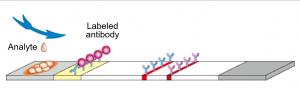Both designers and artists pursue beauty to express their senses. However, the thinking processes and perspectives of art and design are different. Art is a creative activity that makes sculptures of aesthetics. Design is to materialize something sculpturally according to a given environment and purpose. It starts from other people's opinions through social and consumer surveys about who the design is for. Designers should express themselves by adding the designer's formative sense, focusing on the purpose. Design is to create, interpret, and produce results for everything that exists for humans. In other words, the essence of design is communication, not decoration.
New York subway map, a new interpretation of the 1933 London Tube map
In the past, subway lines were drawn as they appeared in real life, but Massimo Vignelli's 1975 map changed the New York subway map to the one we now know. On his subway map, the actual geographical features were ignored. The individual lines, divided by colors, were arranged at 90 degrees and 45 degrees at regularized angles. All the station lines had different colors. The space was economically utilized by unifying the distances between all stations, and was not proportional to the actual distances between the stations. Seoul's subway map inherited the design Vignelli came up with 40 years ago.
Design of mobile phone changed with technology development
With the development of technology, the design of cell phones has changed. The first commercial mobile phone, DynaTAC 8000X, went on sale in 1983, 10 years after the world's first mobile phone was developed by Dr. Martin Cooper of Motorola and his research team in 1973. The DynaTAC 8000X looked big and hard to carry, and at this time, the communication method could only transmit voice in analogue signals, so there was no function other than a "voice call."
The Motorola Micro Tac was the first flip phone to have a flip structure outside of the bar-type mobile phone design. It was released in 1989. The Micro Tac used a flip structure. This type of flip phone was developed to prevent unwanted key malfunctions by creating a cover that covered the keypad.
The StarTAC, the world's first-ever foldable phone, was so popular that it was considered a milestone in the mobile phone market at that time. Launched in 1996, it was the first foldable phone to win an award in the world's leading IT media for its design and functions. The StarTAC became popular is because of its size and weight. When folded, it was 94 x 55 x 19 mm in size and weighed only 88 grams.
As Motorola’s foldable phone became a big hit, Finnish multinational consumer electronics company Nokia launched its first slide phone, the Nokia 8110, as an answer. The Nokia 8110, launched in 1996, was called the 'Bananaphone', and was very popular around the world for its ergonomic design. The prevailing view is that the world's first camera phone was Sharp's J-SH04. The Sharp J-SH04 featured a 110,000-pixel CMOS lens and a 256-color display.
The kettle
At first, the kettle was a simple container for water, but the influence of Chinese tea culture made the kettle popular for various purposes, such as liquor pots and teapots. Tea culture, which originated in China in the 16th century, passed through Europe in the 17th century.
As afternoon tea is regarded as the essence of British culture, beautiful kettles appeared in Britain in the 17th century. A typical example is Simplex's copper kettle. Its brilliant copper color and elegant art deco style enriched daily life.
The electric kettle was invented in 1910 by Peter Behrens. With the advent of electric kettles, kettle materials expanded to glass and plastic. Stainless steel kettles have been commonly used since the 1970s as gas stoves were commercialized. The steel kettle, which has the advantage of not rusting, is designed to be practical, such as having a wide bottom and a large lid that it is easy to clean.
Since the 1980s, kettles have been in harmony with their function and design. Sori Yanagi was one of the representative craftsmen in Japan. He made the steel kettle by considering various factors, such as a form designed to spread heat evenly while keeping the beautiful curves of the East, as well as a device to filter impurities.
Michael Graves, an architect who represents postmodernism, designed a kettle for house wares and kitchen utensil company Alessi. The name of the kettle is Alessi 9093. This
kettle has a triangular shape made of inox, a type of stainless steel, and the rounded arched handle harmoniously blends into the body.
The zipper
At the end of the 19th century, American engineer Whitcomb L. Judson first developed a device that could adjust military boots with moving sliders. Its patent was applied for on November 7, 1891. He titled his application “Clasp Locker or Unlocker for Shoes”. However, the shape of the bent iron protrusion of the device was not good in appearance, and it did not receive much attention because of frequent failures of the device. However, the device was gradually improved. Shoes with the device started to be sold by a company called "B.F. Goodrich". B.F. Goodrich sold shoes under the name of "Zipper", because it sounded like it when the slider was moving, and it became popular. After that, the name of the device became the "zipper". Since then, BF Goodrich has commercialized clothes with zippers, which have spread widely across the globe. Before the invention of the zipper, buttons and straps were in use. The good thing about zippers is that they are very convenient compared to buttons and straps. Zippers have strong holding power and can be easily sewn into your clothes. Most importantly, they are easily washable.
Hyunrim Kim arnoldkim123@naver.com
<저작권자 © 홍익대영자신문사, 무단 전재 및 재배포 금지>





